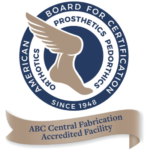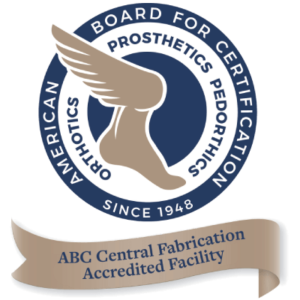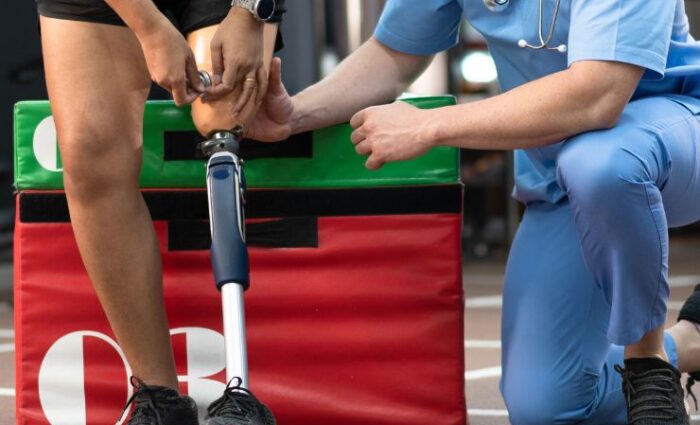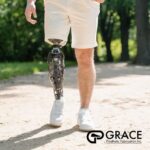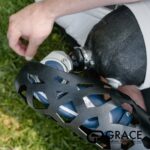For individuals who have lost a limb, adjusting to life with a prosthesis can be a challenging journey. Prosthetic rehabilitation plays a crucial role in helping patients regain independence and improve their quality of life. However, the success of this process extends beyond just fitting and adjusting the prosthesis—it involves comprehensive care that includes physical therapy. Integrating physical therapy with prosthetic rehabilitation ensures that patients achieve optimal functional outcomes and adapt to their new way of life more efficiently.
At Grace Prosthetic Fabrication, we understand the importance of a holistic approach to rehabilitation, combining the expertise of prosthetists and physical therapists to support each patient’s individual needs. In this blog, we’ll explore how integrating physical therapy with prosthetic rehabilitation can lead to better results and faster recovery.
1. The Role of Prosthetic Rehabilitation
Prosthetic rehabilitation is a multifaceted process that begins after the prosthesis is fitted and continues throughout its use. The goal of prosthetic rehabilitation is to help the patient adapt to their new prosthesis, improve mobility, and restore functionality.
Key Aspects of Prosthetic Rehabilitation:
- Fitting and Adjustments: The prosthetist works with the patient to ensure the prosthesis fits properly, providing comfort and ease of movement.
- Training with the Prosthesis: Patients are trained to use the prosthesis effectively, including walking, running, or performing daily tasks depending on their needs.
- Monitoring Progress: Regular check-ups ensure that the prosthesis continues to fit properly and that the patient is progressing toward their rehabilitation goals.
Tip: For optimal results, it’s important to work with a skilled team of professionals who understand both the technical aspects of prosthetics and the rehabilitation process.
2. Why Physical Therapy is Crucial in Prosthetic Rehabilitation
Physical therapy plays a critical role in prosthetic rehabilitation. It helps individuals adapt to their prostheses by strengthening muscles, improving balance, and increasing flexibility—all of which are essential for effective use of the prosthetic limb.
Benefits of Physical Therapy in Prosthetic Rehabilitation:
- Improved Mobility: Physical therapy helps patients learn how to move effectively with their new prosthesis, improving walking, running, and other functional activities.
- Strengthening Residual Limbs: It’s important for patients to strengthen their residual limbs, as they support the prosthesis. Targeted exercises can help prevent pain and discomfort while increasing endurance.
- Pain Management: Physical therapy can help patients manage any discomfort or pain associated with wearing a prosthesis, providing strategies and exercises to address these issues.
- Balance and Coordination: A prosthesis changes the way the body moves, so physical therapy focuses on improving balance and coordination to ensure safe mobility.
- Mental and Emotional Support: Physical therapy can also provide emotional support, helping patients regain confidence and independence.
Tip: Regular physical therapy sessions combined with prosthetic training can significantly enhance the patient’s ability to function and perform daily activities with greater ease.
3. The Phases of Physical Therapy in Prosthetic Rehabilitation
Physical therapy is not a one-time intervention but an ongoing process that evolves as the patient adjusts to their prosthesis. The therapy can be broken down into several phases:
Phase 1: Post-Fitting and Adaptation
Immediately after the prosthesis is fitted, the focus is on teaching the patient how to move and use the prosthesis effectively. Physical therapy in this phase includes:
- Gait training: Learning to walk or run with the prosthesis.
- Strengthening exercises: Focusing on core and residual limb muscles to build strength for prosthetic use.
- Stretching and flexibility: Ensuring that joints and muscles are flexible to avoid stiffness or discomfort.
Phase 2: Strengthening and Functionality
As patients become accustomed to their prosthesis, physical therapy becomes more focused on improving functionality and strength. This phase may involve:
- Increasing activity levels: Working on endurance through more intense exercises or functional activities.
- Weight-bearing exercises: Encouraging patients to put weight on the prosthesis to simulate real-world use.
- Functional training: Practicing specific tasks like climbing stairs, walking on uneven surfaces, or sitting and standing up.
Phase 3: Long-Term Maintenance and Refinement
Ongoing physical therapy is essential for long-term success. This phase focuses on:
- Maintaining mobility: Ensuring that the patient continues to improve and maintain strength and flexibility.
- Adapting to life changes: Addressing any issues that arise as the patient becomes more active, such as changes in body weight or the need for a new prosthesis.
- Continued mental and emotional support: Helping patients adjust emotionally and socially as they regain confidence and independence.
Tip: Consistency in physical therapy throughout all phases of rehabilitation is essential to ensure long-term success and functionality.
4. Collaboration Between Prosthetist and Physical Therapist
The integration of physical therapy into prosthetic rehabilitation isn’t just about separate sessions for the patient; it’s about collaboration between the prosthetist and physical therapist. A team-based approach ensures that the patient’s rehabilitation is cohesive, personalized, and effective.
Key Collaboration Areas:
- Customizing Exercises to Prosthetic Design: Physical therapists can tailor exercises based on the specific prosthesis the patient is using, ensuring that movements are safe and effective.
- Adjustments for Optimal Comfort and Function: If the patient experiences discomfort or difficulty using the prosthesis, both the prosthetist and physical therapist work together to address the issue. This might involve making adjustments to the prosthesis or refining physical therapy exercises.
- Ongoing Support: As the patient’s condition evolves, both professionals continue to offer support, making modifications to the treatment plan to keep the patient progressing toward their goals.
Tip: Open communication between the prosthetist, physical therapist, and patient ensures a more successful, tailored rehabilitation experience.
Contact Grace Prosthetic Fabrication for Prosthetic Fabrication
The journey to adapting to a prosthesis is complex, but with the right combination of prosthetic rehabilitation and physical therapy, patients can achieve optimal outcomes. At Grace Prosthetic Fabrication, we work alongside skilled physical therapists to provide a comprehensive rehabilitation experience that prioritizes strength, mobility, and independence. Our goal is to help every patient regain their confidence, improve their quality of life, and live as fully as possible with their prosthetic limb.
If you or a loved one are in need of prosthetic rehabilitation, contact Grace Prosthetic Fabrication today to learn more about how we can help you achieve the best possible outcomes.

